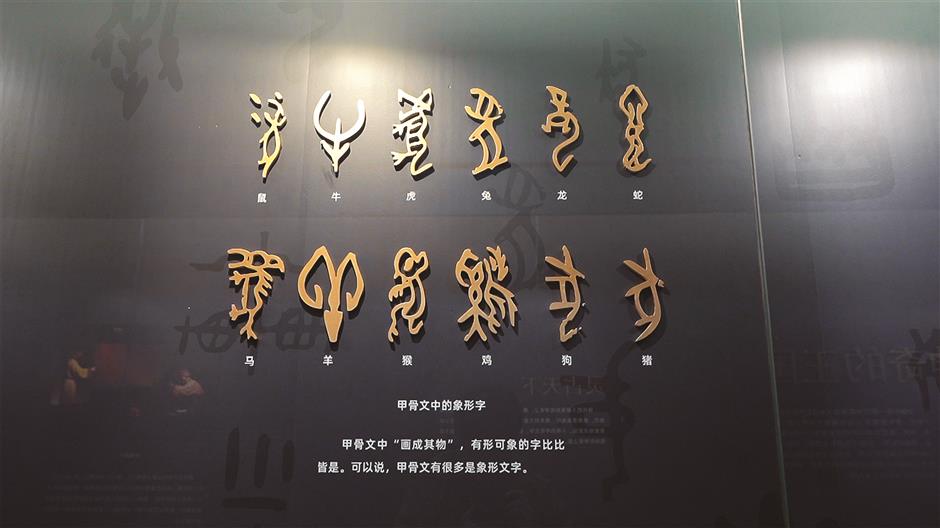Oracle bone inscriptions showcase earliest writing system in China
The oracle bone script, which was carved on turtle nails and animal bones during the Shang (1600 BC-1046 BC) and Zhou (c.11th century-256 BC) dynasties, is believed to be the earliest mature writing system in China.
An exhibition, “The Memory of Oracle Bone Script,” currently underway at Jiading Museum, includes 108 pieces (sets) of oracle bones, challenging visitors to “read a unique letter” from an ancient era.
This display includes oracle bones, archaeological excavations and a collection of research findings.
The exhibition is divided into four sections: “Civilization Revisited,” “Mysterious Writing,” “Magical Kingdom” and “Journey of Discovery,” and guides visitors through the origins of ancient Chinese culture.
The exhibition begins with the discovery of the oracle bones, providing insight into the inscription processes and essential values, and reconstructing a panorama picture of the Yin-Shang period as documented in the oracle bones.
So far, Chinese archaeologists have excavated around 100,000 instances from 15 different sites near Anyang, central Henan Province.
The language employed on the oracle bones was unearthed in 1899 by a Chinese scholar surnamed Wang, who was astounded to learn that the “dragon bone” he had acquired was inscribed with what appeared to be an early form of Chinese writing.
Often, diviners used the shoulder blade of an ox or the bottom of a turtle’s shell to assist Shang Dynasty aristocrats in seeking advice from their ancestors or other supernatural beings.

The diviners carved out queries on a tortoiseshell to seek advice from the ancestors or other supernatural beings during the Shang and Zhou dynasties.
The diviner was the person who prophesied the tortoise. His identification was complicated, with kings, royal officials, ministers and other courtiers and patriarchs all involved. More than 100 Shang Dynasty diviners have been identified to date. Belonging to the same or different times, they are an important criterion for the periodization and chronological study of oracle bone inscriptions.
The diviner would engrave his inquiries onto the surface of the bone or shell, heat it, and then interpret the resulting fractures in order to find answers. They inquired about weather and crop forecasts.

Burnt holes can be seen on a cracked piece of oracle bone.
They wanted to know whether it was a good occasion to go on hunting excursions, travel, military campaigns or for childbirth. They wondered when specific religious events should take place and what their dreams represented. Those questions provide a glimpse into the lives and concerns of people long gone.
“The oracle bone inscriptions contain numerous pictographs; thus, based on their shape, you can infer what they represent,” according to a visitor, Fang Yiwei.

The 12 Chinese zodiac signs depicted in oracle bone inscriptions are on display. Many of them resemble the shapes of the corresponding animals.
Standing in front of a display of the 12 Chinese zodiac signs, Fang immediately recognized his own sign as he exclaimed, “The upper half of this character is very similar to the horn of a ram.”
During the exhibition, customized display classrooms, quizzes and interactive live installations will guide visitors through the discovery, characteristics, historical background, and research results of the oracle bones from different perspectives.
Exhibition info
Date: Through July 30 (closed on Mondays)
Admission: Free (reservation via the museum's official WeChat account is required)
Address: 215 Bole Rd
















